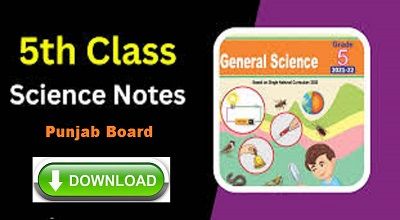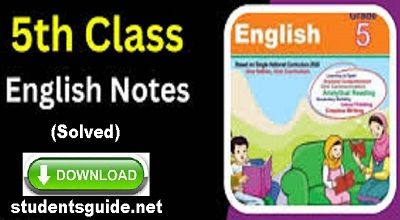Students Learning Apps
Student learning apps are digital tools designed to support and enhance the educational experience for students. These apps can cover various subjects and skills, providing resources, exercises, and interactive content to aid learning. They often include features like:
- Interactive Lessons: Engaging content that might include videos, quizzes, and activities to make learning more dynamic.
- Practice Exercises: Activities and problems to help reinforce concepts and allow students to practice skills.
- Progress Tracking: Tools to monitor progress, track improvements, and identify areas where students might need more help.
- Homework Help: Assistance with specific homework questions or topics, sometimes offering step-by-step solutions or explanations.
- Collaboration Tools: Features that enable students to work together on projects or study groups, often with chat or shared document capabilities.
- Gamification: Incorporation of game-like elements to make learning more fun and motivating, such as earning points, badges, or rewards.
- Customizable Learning Paths: Personalized learning experiences based on the student’s level, interests, or goals.
- The Digital Age of Learning: Discuss the impact of technology on education and how apps have transformed the way students learn.
- Why Learning Apps Are Essential: Explain why students today need more than just textbooks and how apps can supplement traditional learning.
1. Khan Academy
- Overview: Provide a brief history and background of Khan Academy.
- Key Features: Describe the main features, such as video tutorials, practice exercises, and personalized learning dashboards.
- Subjects Covered: List the range of subjects, including math, science, economics, and humanities.
- Benefits for Students: Explain how Khan Academy helps students with personalized learning paths, instant feedback, and preparation for standardized tests.
2. Duolingo
- Overview: Introduce Duolingo as a language-learning app with a gamified approach.
- Learning Structure: Describe how lessons are structured and the variety of languages available.
- Gamification Elements: Explain how Duolingo keeps users engaged through streaks, rewards, and challenges.
- Advantages for Students: Discuss the benefits of learning new languages and how Duolingo can help students improve their language skills for travel, exams, or personal growth.
3. Coursera
- Overview: Explain what Coursera is and its partnership with universities and organizations.
- Course Variety: Detail the wide range of courses available, from computer science to humanities.
- Certificates and Degrees: Discuss the opportunity for students to earn certificates or even degrees online.
- Real-World Application: Highlight how students can apply what they learn in real-world scenarios.
4. Quizlet
- Overview: Describe Quizlet as a study tool that helps students memorize through flashcards and games.
- Study Modes: Explain the different study modes, such as flashcards, learn, write, spell, and test.
- Customizable Content: Discuss how students can create study sets or choose from millions of pre-made sets.
- Student Success Stories: Include anecdotes or testimonials from students who have improved their grades using Quizlet.
5. Evernote
- Overview: Introduce Evernote as a note-taking app that helps students stay organized.
- Features: Describe key features like note syncing, to-do lists, and web clippings.
- Productivity Boost: Explain how Evernote can help students manage their time, take better notes, and organize their study materials.
- Cross-Platform Compatibility: Discuss the advantage of Evernote being available on multiple devices.
6. Photomath
- Overview: Introduce Photomath as an app that solves math problems using the camera.
- How It Works: Explain the process of scanning a math problem and receiving step-by-step solutions.
- Educational Value: Discuss how Photomath not only provides answers but also teaches students how to solve problems.
- Limitations: Address potential drawbacks, such as the temptation to rely on the app without learning the material.
7. Google Scholar
- Overview: Describe Google Scholar as a search engine for academic literature.
- Research Capabilities: Explain how students can use Google Scholar to find scholarly articles, theses, books, and conference papers.
- Citation Tools: Highlight the built-in citation tools and how they can help students with research papers.
- Access to Knowledge: Discuss the importance of having access to a vast library of academic resources.
8. Wolfram Alpha
- Overview: Introduce Wolfram Alpha as a computational knowledge engine.
- Problem-Solving: Explain how it can solve complex math problems, provide detailed explanations, and generate visualizations.
- Wide Range of Subjects: Discuss how Wolfram Alpha covers more than just math, including physics, chemistry, and even history.
- Practical Applications: Provide examples of how students can use Wolfram Alpha for homework, projects, and studying.
9. Notion
- Overview: Describe Notion as a versatile app that combines notes, tasks, databases, and calendars.
- Organizational Features: Explain how students can use Notion to organize their study schedules, class notes, and group projects.
- Customization: Discuss the ability to create personalized dashboards and templates for various academic needs.
- Collaboration Tools: Highlight how Notion allows students to collaborate on projects and share notes with classmates.
10. Edmodo
- Overview: Introduce Edmodo as a social learning platform that connects students with teachers.
- Classroom Integration: Explain how Edmodo facilitates communication, assignments, and quizzes in a virtual classroom setting.
- Parental Involvement: Discuss how parents can stay informed about their child’s progress through Edmodo.
- Real-World Impact: Provide examples of how Edmodo has been used in classrooms around the world to enhance learning.
Conclusion
- The Future of Learning: Reflect on how these apps are shaping the future of education and the potential for even more advanced educational tools.
- Choosing the Right App: Offer tips on how students can choose the best app(s) based on their learning style and academic needs.
- Encouraging Lifelong Learning: Encourage students to take advantage of these tools to foster a habit of lifelong learning.
TLC Practice Exam App Mod Apk Free Download
FAQs
- What are the best apps for learning a new language?
- Discuss Duolingo and other language-learning apps like Babbel and Rosetta Stone.
- Can these apps replace traditional classroom learning?
- Explore the benefits and limitations of using apps compared to traditional education.
- Are these apps free to use?
- Provide information on the pricing structure of the apps, including free versions and premium features.
- How do I choose the right app for my learning style?
- Offer guidance on selecting apps based on individual preferences, such as visual learning, interactive lessons, or self-paced study.
- Can these apps help with exam preparation?
- Explain how apps like Khan Academy and Quizlet can be used for studying and preparing for exams.
- How do I stay motivated while using educational apps?
- Provide tips on setting goals, tracking progress, and maintaining a regular study routine using these apps.
- Are there any privacy concerns with using educational apps?
- Discuss potential privacy issues and how students can protect their data while using these apps.






